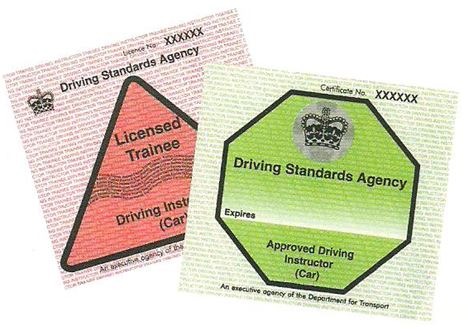Instructor Training
To be eligible to train as a driving instructor you need to meet the below criteria
Be at least 21 years old.
Have held a full car driving licence for at least three years.
Hold a licence with no more than six penalty points.
Must not be disqualified from driving at the time of application.
Be able to read a car number plate from 90 feet (26.5 metres) (with or without corrective lenses).
Pass a Disclosure and Barring Service (DBS) check to confirm suitability to work with the public.
Part 1


Part 1 of becoming an Approved Driving Instructor (ADI) is a theory and hazard perception test that checks your knowledge and awareness. It is split into two sections.
The theory test has 100 multiple-choice questions across four categories: road procedure, traffic signs and signals/car control/pedestrians/mechanical knowledge, driving test and disabilities, and instructional techniques.
You need an overall score of at least 85 out of 100, with a minimum of 20 correct answers in each category to pass.
The second section is the hazard perception test, which involves watching 14 video clips of everyday road scenes and spotting developing hazards.
You can score up to 5 points per hazard, and you must score at least 57 out of 75 to pass.
Both sections must be passed at the same attempt in order to move on to Part 2 of the ADI qualification process.


Part 2
Part 2 of becoming an Approved Driving Instructor (ADI) is the driving ability test, which assesses whether you have the advanced driving skills needed to teach learners safely and professionally.
The test is conducted by a DVSA examiner and lasts about one hour. It begins with an eyesight check, where you must read a number plate from 26.5 metres.
You’ll then be asked vehicle safety questions (known as ‘show me, tell me’ questions) before completing a practical driving test that is more demanding than the standard L test.
You must demonstrate a high standard of competence in areas such as expert vehicle control, anticipation and planning, judgment of other road users, and eco-safe driving.
The test also includes several reversing manoeuvres and possibly an emergency stop.
To pass, you must make no more than six driving faults, with no serious or dangerous faults, proving you can drive to a standard expected of a professional instructor.
Part 3 of becoming an Approved Driving Instructor (ADI) is the instructional ability test, which assesses your competence in teaching learner drivers.
In this stage, a DVSA examiner observes you giving a real driving lesson to a pupil (either a learner or a full licence holder) lasting around one hour.
You are expected to plan the lesson around the pupil’s needs and level of ability, set clear objectives, and adapt your teaching methods appropriately throughout.
The examiner marks you against 17 competencies, grouped under three main categories: lesson planning, risk management, and teaching and learning strategies. Each competency is scored from 0 to 3, and you need to achieve a minimum overall score of 31 out of 51 to pass.
A score of 43 or above demonstrates a high standard of instruction and earns you an A grade, while 31–42 results in a B grade.
Anything below 31 is a fail. Passing Part 3 confirms that you can deliver safe, structured, and effective driving tuition.
Get in touch
Billy - 07737 109761
Kirk - 07738 783260




